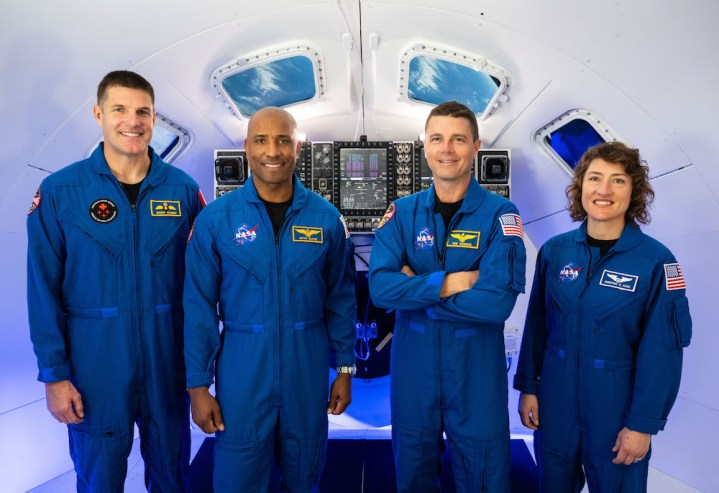
Training is about to get underway for the first lunar-bound crewed mission in 50 years.
NASA astronauts Christina Koch, Victor Glover, and Reid Wiseman, together with Canadian Space Agency astronaut Jeremy Hansen, will begin preparing for the Artemis II mission in June, NASA said this week.
The training program for the 10-day mission is expected to last 18 months. Most of it will take place at the Johnson Space Center in Houston, Texas, where NASA has a mockup of the Orion crew module, and also at the Kennedy Space Center in Florida, the mission’s launch location.
Currently slated for November 2024, Artemis II has been made possible by the successful Artemis I mission, which last year tested NASA’s new Space Launch System (SLS) rocket and Orion spacecraft in a trip around the moon that will be closely followed by the Artemis II crew. The upcoming mission will bring the astronauts to within around 80 miles of the lunar surface and take them further from Earth than any crewed mission has gone before.
The training will include detailed lessons on the Orion spacecraft and SLS rocket systems, including how to operate and monitor systems for the ascent, orbit and coast, and entry phases of the mission, and how to respond to any emergency situations that arise, NASA said.
“We’re building a robust training plan for the crew to ensure they’re ready for every aspect of this first mission to the moon under Artemis on our newest spacecraft and rocket,” said Jacki Mahaffey, lead training officer for the Artemis II crew. “Since this is the first time we’ll train crew for Artemis missions, Reid, Victor, Christina, and Jeremy are going to be integral to helping us refine future training requirements, as well.”
The four crew members for NASA’s Artemis II mission were introduced to the public at a special event last month. All except Hansen have traveled to space before, staying aboard the International Space Station in low-Earth orbit.
A successful mission will pave the way for the highly anticipated Artemis III mission — possibly in 2025 — which will perform the first crewed lunar landing since the last Apollo mission in 1972.
NASA’s Artemis program will use new technologies to explore more of the lunar surface than ever before. The ultimate aim is to establish the first long-term presence on the moon and potentially use the celestial body as a launch pad for the first crewed mission to Mars.


